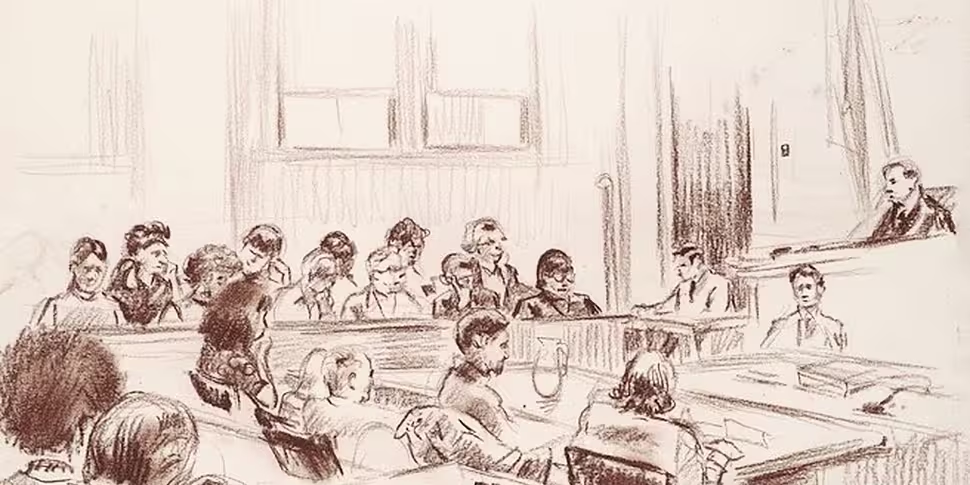As part of our Summer Season of Documentary on Newstalk, Producer Patricia Baker explores the current role of court artists who capture the moments when a person’s fate rests with the law...in: Law Lines
The use of cameras is still restricted in modern courtrooms. The only way the public can see the accused from afar is through the hand of the modern day Court Artist, plying a trade that has remained unchanged for centuries.
100 years ago Sir John Lavery sat in the jury box and witnessed, for future generations, one of the most important court trials in Irish history. Lavery was permitted to paint in the courtroom by the presiding judge, Judge Darling. His painting High Treason: The Appeal of Roger Casement is now arguably one of Ireland’s most important historical documents. “It is the most wonderful legal painting in the world, and is for Ireland an historical document of unparalleled importance” said Barrister John McGuiggan.
Law Lines recounts the history and background of Sir John Lavery’s 1916 painting High Treason, The Appeal of Roger Casement and explores how the events that take place in our courtrooms are presented to the public through the work of modern day artists.
As with Lavery, the artist continues to be the public's eye for some of the most high profile courtroom dramas and by extension, important moments in our history.
By interviewing modern day Court Artists in the UK and Ireland, Law Lines explores how their work captures the moment when a person’s fate rests with the law
Law Lines will air on Newstalk 106-108fm on Saturday 16th July at 7am, and will be repeated at 10pm.
BROADCAST DETAILS:
Law Lines is part of the Summer season of Documentary On Newstalk
LISTEN LIVE ONLINE: Law Lines can also be listened to online at: www.newstalk.com
PODCAST: Podcast available at: www.newstalk.com/documentaryonnewstalk after the broadcast.
CREDITS: Law Lines is a Curious Broadcast production funded by The Broadcasting Authority of Ireland with the Television License fee. Law Lines was produced, presented and edited by Patricia Baker, Editor and final mix by Gerry Horan of Contact Studio
Quotes from Law-Lines
I went along to a trial as an adult with my child. I didn't know there was a law that said you must not draw in court, the 1925 Criminal Justice Act; you must not draw in court or take photos in court. I came out, after drawing a bit on my shopping list. The press were outside and they asked me what was going on, what did the accused look like. “Like this”, I said, and opened up my shopping list with bread, milk and butter written on it with the face of the defendant drawn at the end. That went in the papers that night. The BBC were there, they asked: “We have a trial down in Plymouth, can you get there tomorrow?” That is how I started and that was a long time ago. Elizabeth Cook, Court Artist
I suppose one of the things about this as a painting which is interesting to me, (Lavery’s High Treason, The Appeal of Roger Casement) is that we get a document, done in the measured slow process of painting which is a document of historical fact. But the thing that would strike you and strike anyone looking at this, is that it is a great dramatic theatre. What Lavery has done well with Casement in the middle, with the assembled crowd, with the judges and lawyers, is to give a sense of the aesthetic, the elaborate context in which this all happens. Declan Long, Art Critic and Lecturer
I think it is a fantastic portrayal of a very historical trial and it operates on a number of levels, both as a historical record and also as a really great painting, and captures some of the drama of the proceedings. It has history, knowledge, drama, bit of pomp and ceremony, a bit of excitement. Mr Justice Donal O’Donnell: Judge of the Supreme Court









